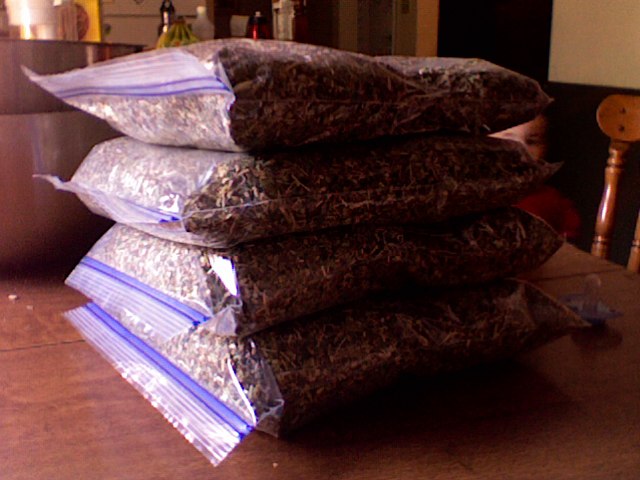*New recipe is here.*
I got the herbs in and mixed them up then divided (sharing with some other doulas.) Each of these is a gallon size bag holding a pound by weight of herbs, it's a LOT! 🙂 One bath needs about a cup of herbs infused in 4 cups of hot water then strained into your bath.

From the previous post, this is what I included:
Shepherd's Purse - from the battlefields of World War I to the natural first aid kit, Shepherd's Purse is known to be a powerful astringent. In traditional herbalism, astringent herbs help tighten tissues, and reduce secretions & discharges. One of Shepherd's Purse major compounds includes vitamin K, which promotes proper blood clotting. Current herbal texts cite Shepherd's Purse for supporting a smooth female cycle and for promoting urinary tract health. Common use: Herbal astringent; promotes urinary tract health; supports healthy blood pressure; supports venous health.
Comfrey's botanical name is derived from the Greek and Latin words, which mean "to unite", "with strength". A breakdown of Comfrey's active natural compounds reveal it's a rich herbal source of allantoin, a natural substance that promotes new cell growth. It's no wonder Comfrey is commonly used in external preparations for temporary bone, cartilage, tendon and muscle discomfort, as well as to soothe irritated skin.
Witch Hazel is one of those herbs that have a long history of use in North American herbalism. Today, it continues to be trusted and well respected for its ability to support healthy veins, which are vital for circulatory health.
Yarrow: In ancient mythology, Yarrow is the herb used by Achilles to heal the wounds of his warriors - perhaps the reason for its other common name, Herba militaris. Whatever the case, Yarrow is more realistically used today for its potent astringent action.

6 Responses to Herbal Bath